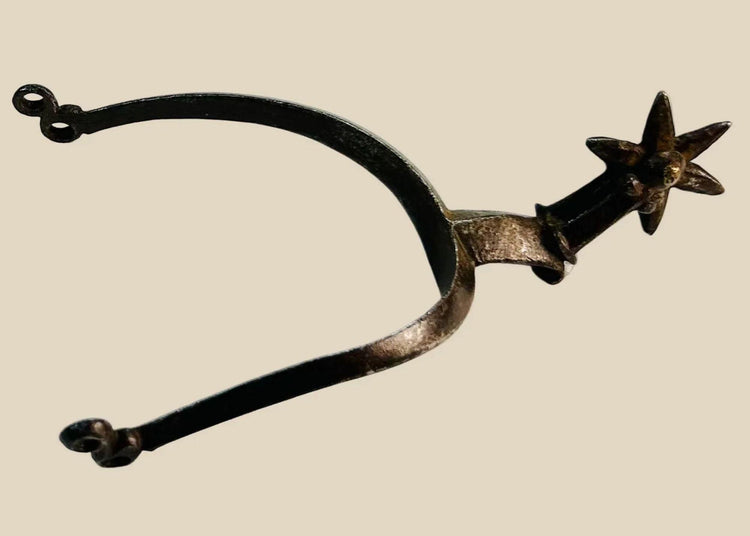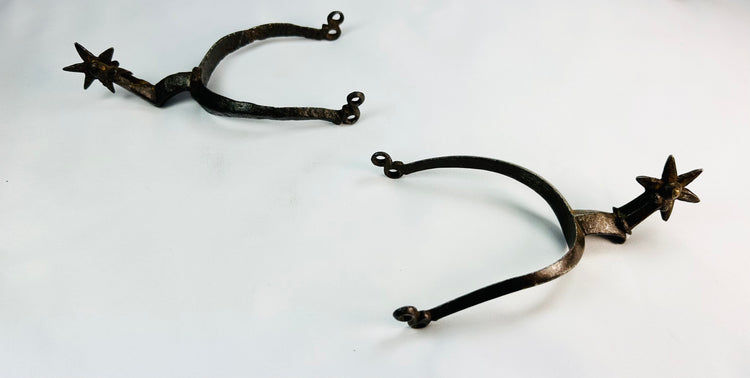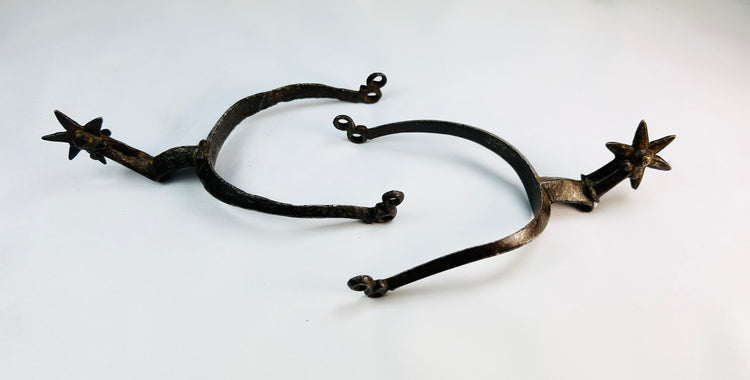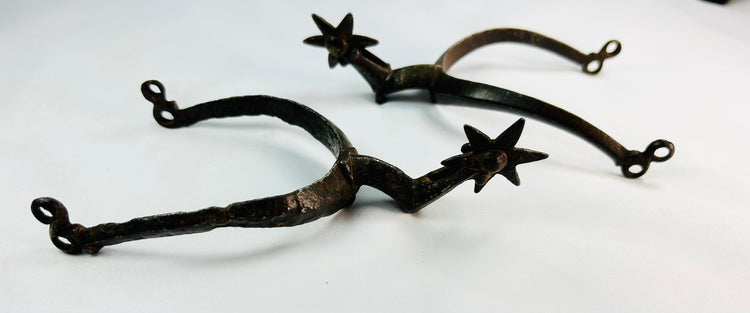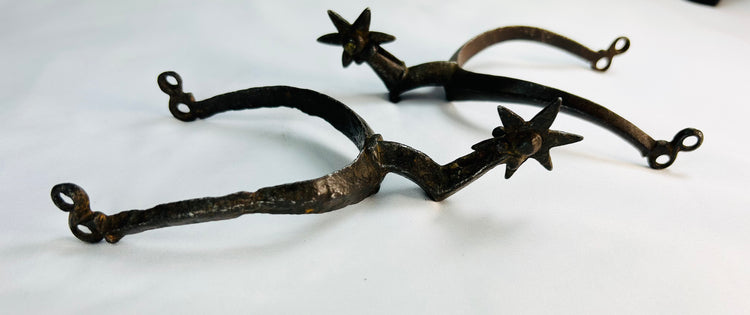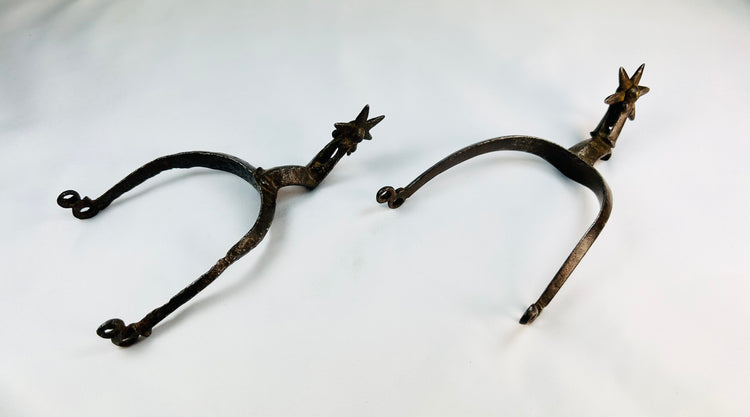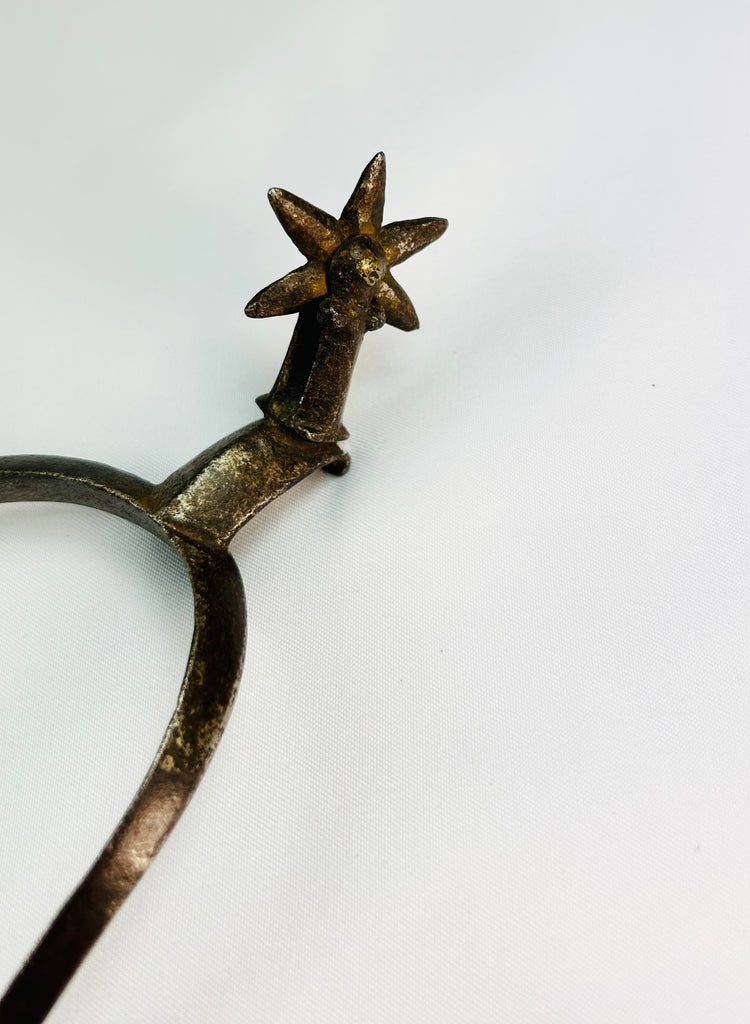Saxon German Spurs | Forged Iron Riding Spurs with Six-Pointed Rowels | Late 16th–Early 17th Century
Description
More
Less
Historical Context & Origin
Region: Saxony, Germany
Material: Forged iron/steel with aged patina
Period: Late 16th–early 17th Century
Description
A finely crafted pair of German spurs, produced in Saxony during the second half of the 16th century and into the early 17th century. These spurs feature large, sharply defined six-pointed rowels and a gracefully curved frame with a high rounded ridge section, hallmarks of German Renaissance design.
The short hooked shank, double eye terminals, and overall ergonomic construction reflect both function and artistry. Spurs of this type were worn by nobility and military riders for equestrian control, ceremonial display, and martial use.
Features
- Large six-pointed rowels for precision riding control
- Curved frame with high rounded ridge section, ergonomic and aesthetic
- Short shank with hooked base and double eye terminals
- Distinctive Saxon design, blending functionality with artistic detail
- Patinated surfaces with visible signs of authentic age and use
Cultural Significance
Spurs played a central role in Renaissance cavalry and noble culture. In battle, hunting, and courtly ceremonies, they were essential tools of communication with the horse while also serving as visible emblems of rank. Saxony was renowned for its skilled armorers and metalworkers, producing spurs and related accoutrements that combined martial utility with refined craftsmanship.
Condition
Remarkably well-preserved for their age. Metal shows stable patina and wear consistent with centuries of use. Rowels remain sharply defined, terminals and frames intact. Age and surface wear enhance authenticity and character.
Dimensions (approximate)
Length: 5.5 in
Age
Late 16th–early 17th Century (ca. 1550–1620), Saxon manufacture
Learn More
Read About How Riding Spurs Shaped Mounted Combat & Travel
Explore Our Collection of Medieval Armour and Artifacts
Description
Historical Context & Origin
Region: Saxony, Germany
Material: Forged iron/steel with aged patina
Period: Late 16th–early 17th Century
Description
A finely crafted pair of German spurs, produced in Saxony during the second half of the 16th century and into the early 17th century. These spurs feature large, sharply defined six-pointed rowels and a gracefully curved frame with a high rounded ridge section, hallmarks of German Renaissance design.
The short hooked shank, double eye terminals, and overall ergonomic construction reflect both function and artistry. Spurs of this type were worn by nobility and military riders for equestrian control, ceremonial display, and martial use.
Features
- Large six-pointed rowels for precision riding control
- Curved frame with high rounded ridge section, ergonomic and aesthetic
- Short shank with hooked base and double eye terminals
- Distinctive Saxon design, blending functionality with artistic detail
- Patinated surfaces with visible signs of authentic age and use
Cultural Significance
Spurs played a central role in Renaissance cavalry and noble culture. In battle, hunting, and courtly ceremonies, they were essential tools of communication with the horse while also serving as visible emblems of rank. Saxony was renowned for its skilled armorers and metalworkers, producing spurs and related accoutrements that combined martial utility with refined craftsmanship.
Condition
Remarkably well-preserved for their age. Metal shows stable patina and wear consistent with centuries of use. Rowels remain sharply defined, terminals and frames intact. Age and surface wear enhance authenticity and character.
Dimensions (approximate)
Length: 5.5 in
Age
Late 16th–early 17th Century (ca. 1550–1620), Saxon manufacture
Learn More
Read About How Riding Spurs Shaped Mounted Combat & Travel
Explore Our Collection of Medieval Armour and Artifacts
You May Also Like


















